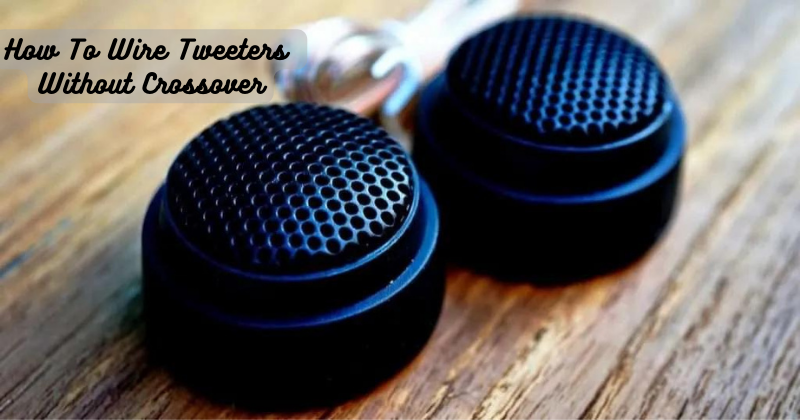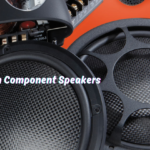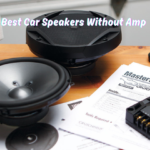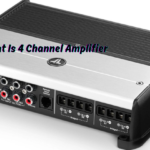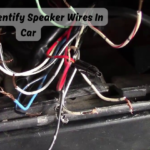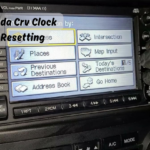Tweeters are an essential component of a car audio system, responsible for producing high-frequency sounds. Usually, when installing tweeters in a car audio system, a crossover is used to filter the high-frequency signals from the amplifier before sending them to the tweeters.
However, sometimes it may not be possible or necessary to use a crossover, such as in budget setups or when replacing blown tweeters. In such cases, it is possible to wire the tweeters directly to the amplifier without using a crossover. This process requires some knowledge of car audio wiring and an understanding of how tweeters work. In this guide, we will show you how to wire tweeters without a crossover, step by step.
Wiring Tweeters Without Crossover
Before we get into the wiring process, it is important to understand how tweeters work and their role in a car audio system. Tweeters are designed to reproduce high-frequency sounds that are not easily produced by larger speakers. They typically have a small diameter and can handle higher power levels compared to other speakers.
When using a crossover, it separates the high-frequency signals from the amplifier and sends them to the tweeters, while the low and mid-range frequencies are sent to the larger speakers. This ensures that each speaker receives only the frequencies it is designed to handle, resulting in better sound quality.
However, when wiring tweeters without a crossover, we must be careful not to send high-powered signals directly from the amplifier to the tweeters. This can cause damage to the tweeters and result in poor sound quality. To avoid this, we need to use a capacitor in line with the tweeter to filter out any unwanted frequencies.
Steps to Wire Tweeters Without Crossover
There are a few steps to follow when wiring tweeters without a crossover:
Step 1: Choose the Right Tweeters
When wiring tweeters without a crossover, it is important to choose the right tweeters for your car audio system. Make sure to check the power handling and frequency range of the tweeters before purchasing them. Tweeters with higher power handling and a wider frequency range can handle more powerful signals from the amplifier without getting damaged.
Also, consider the size and shape of the tweeters to ensure they can fit in your car’s speaker housing. Lastly, if you are replacing blown tweeters, make sure to match their specifications with the new ones to maintain balance in your audio system.
Step 2: Gather Tools and Materials
You will need some tools and materials to complete this process, including:
- Wire cutters/strippers
- Soldering iron (optional)
- Electrical tape
- Capacitor (depending on the power handling of your tweeters)
- Speaker wire
Step 3: Prepare the Power Source
Before connecting the tweeters, you need to prepare the power source. This involves disconnecting the positive (+) lead of your car’s battery to prevent any electrical accidents. Then, locate the speaker wires that are sending high-frequency signals from the amplifier and cut them.
Additionally, if your tweeters require a capacitor, you will need to solder it onto the positive lead of one of the cut wires. This will act as a high-pass filter and prevent any low or mid-range frequencies from reaching the tweeter.
Step 4: Connect the Tweeters
Next, you will connect the tweeters to the prepared power source. If using a capacitor, connect the positive lead of the tweeter to the positive wire with the capacitor attached. Then, connect the negative (-) lead of the tweeter to a ground point in your car’s body or chassis.
If your tweeters do not require a capacitor, simply connect their positive and negative leads directly to the prepared power source. Make sure all connections are secure and insulated with electrical tape.
Step 5: Test and Adjust
After completing the wiring process, it is important to test the tweeters and make any necessary adjustments. Reconnect your car’s battery and turn on your audio system. Play some high-frequency music or a sound test track to check if the tweeters are producing sound without distortion.
If the tweeters are too loud, you can add a resistor in line with the positive lead to reduce the power going to them. On the other hand, if they are not producing enough sound, you may need to use a larger capacitor.
Also, make sure to adjust the balance and fade settings on your audio system to ensure a proper sound stage.
Benefits of Wiring Tweeters Without Crossover
Wiring tweeters without a crossover offers some benefits, such as:
- Cost-saving: Not using a crossover can save you money if you are on a budget or cannot afford to replace a blown one.
- Easy installation: The process of wiring tweeters without a crossover is relatively simple and can be done by most car audio enthusiasts with basic knowledge of wiring.
- Flexibility: Without a crossover, you have more flexibility in choosing the location and positioning of your tweeters, as they can be directly wired to the amplifier or any other power source.
- Improved sound quality: When done correctly, wiring tweeters without a crossover can result in improved sound quality, especially when using high-quality tweeters.
- Better compatibility: In some cases, using a crossover may cause compatibility issues with certain amplifiers or tweeters. By not using a crossover, you eliminate this potential issue.
- Customization: Wiring tweeters without a crossover allows for more customization and experimentation with different wiring configurations, which can lead to finding the perfect sound for your car audio system.
- Simpler troubleshooting: In the event of any issues with your tweeters, troubleshooting is simpler without a crossover involved. This can save time and frustration in identifying and fixing the problem.
Mistakes to Avoid
While wiring tweeters without a crossover can offer some benefits, there are also some common mistakes to avoid, including:
- Mismatched impedance: It is important to match the impedance of your tweeters with other speakers in your audio system. Otherwise, it can cause distortion and poor sound quality.
- Incorrect placement: Tweeters should be placed at ear level for optimal sound quality and imaging. Placing them too low or high can negatively affect the listening experience.
- Using incorrect wiring: Using incorrect gauge or type of wire can also affect the sound quality and potentially damage your tweeters. Make sure to use appropriate wires for your specific tweeters.
- Not testing and adjusting: Skipping the important step of testing and adjusting can result in poor sound quality, even if you have wired your tweeters without a crossover.
- Neglecting to secure connections: It is crucial to properly secure all connections with electrical tape or other insulation methods to avoid any electrical accidents.
- Not following proper safety precautions: Make sure to always disconnect the positive lead of your car’s battery and take other necessary safety measures when working with electrical components.
- Skipping research and proper guidance: As with any DIY project, it is crucial to do proper research and follow step-by-step instructions or seek guidance from experts to avoid making costly mistakes.
FAQs
Are tweeters necessary for car audio?
Tweeters are not mandatory, but they play a crucial role in producing high-frequency sounds and improving the overall sound quality of your car’s audio system.
Can I use any type of tweeter for my car?
It is recommended to use tweeters specifically designed for car audio systems. These tweeters are built to withstand the harsh conditions of a car’s interior and work efficiently with other components in the system.
Can I wire tweeters without a capacitor?
Yes, it is possible to wire tweeters without a capacitor. However, using a capacitor can help prevent damage to your tweeters and improve sound quality by acting as a high-pass filter.
Can I use different impedance tweeters together?
It is not recommended to mix tweeters with different impedances in the same car audio system. This can cause distortion and potentially damage your speakers and amplifiers.
Conclusion
Wiring tweeters without a crossover can be a cost-effective and flexible option for improving the sound quality of your car’s audio system. However, it is important to avoid common mistakes and follow proper safety precautions to ensure optimal results.
Before starting the process, make sure to do thorough research or seek guidance from experts if needed. With proper installation and adjustments, you can enjoy a high-quality soundstage in your car without using a crossover. So, take your time and experiment with different wiring configurations to find the perfect sound for your car audio system. Happy listening!
